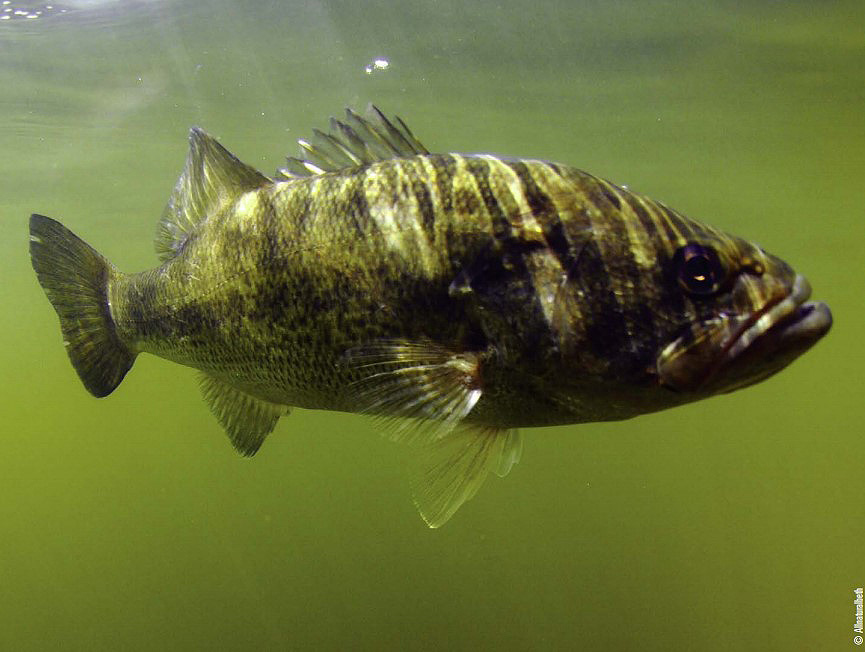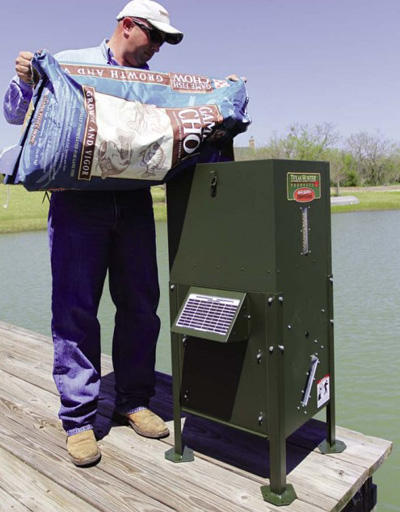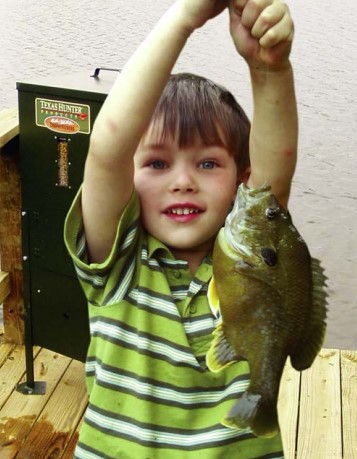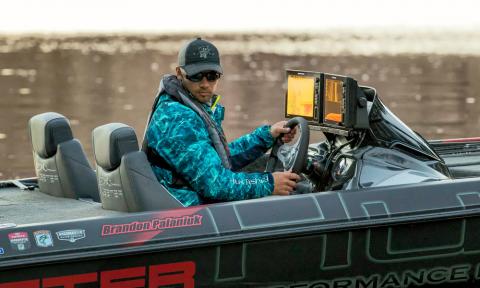Chris Blood | Originally published in GameKeepers: Farming for Wildlife Magazine. To subscribe, click here.

If growing big bass is your goal, keep in mind that bass, for the most part, prefer the biggest live prey they can swallow, the bigger the better—and not necessarily the most abundant. That is unless they will end up expending more energy than they will take in. If it's too difficult to catch the larger prey they’ll opt for a smaller target. The second thing to remember is that bass are not picky—they’ll eat just about anything you have in the lake including shad, bluegill, yellow perch, crappie, tilapia, catfish, crawfish and yes, even other bass.
There are numerous feeding theories out there, but what I’ve found over the years is that bass don't care about our theories. They just want the right size food at the right time to grow into nice trophy bass that everyone, especially grandkids, loves to catch. So if you want to grow huge bass, you need a lot of forage fish.
Some of the best forage fish are bluegills. I once heard Bob Lusk, known as the “Pond Boss,” tell a group of lake owners, “Bluegill are the backbone of a good bass lake”—and I’ve always remembered that vital ingredient. Other common or regional names for bluegill include sunfish, bream, copperheads, perch and shell-cracker.
If your goal then is to have a lot of bluegill for the bass or to grow big bluegill—which are also a fantastic sport fish—then what do the bluegill eat? The answer is there are a lot of naturally occurring foods for bluegills in most ponds and lakes, including zooplankton, worms, insects, crayfish, minnows, and…fish feed. Bluegill love fish feed and will take to it quickly, so you can grow them large and fast by starting a supplemental feeding program.
What is Supplemental Feeding?

So what does supplemental feeding mean? It’s supplementing your pond or lake’s existing food sources by adding fish feed on a regular basis. Research has shown that feeding will positively affect a pond or lake’s entire food chain by increasing the size of the forage fish and triggering those fish to spawn more frequently. As a result of feeding, you’ll have more, larger fish for the bass to eat.
The two most common types of fish feed include floating or sinking pellets, in varying sizes. Sinking pellets are useful in conditions with fast currents or windy conditions and also used to keep non-targeted animals like birds and waterfowl from reaching the food before your fish. The other big benefit of feeding your bluegill is that they’ll reproduce more frequently on a feeding program. In fact, studies have shown they’ll reproduce two to four times more often. Bluegill spawn in groups in April through October when the water temperature is above 70-degrees. The females lay between 2,000 and 60,000 eggs which hatch within 35 hours.
Why will bluegill grow bigger and faster on a feeding program? Because the feed nutrients go directly into fish production—here’s the formula: One and one-quarter pounds of feed will translate into one pound of fish. That means a 50-pound bag of feed will grow 40 pounds of fish! Take the cost of one bag of fish feed and divide that by 40 pounds and the cost to increase the size of the bluegill in the economical range between 25 and 50 cents per pound.
In a recent supplemental feeding case study conducted on a 32-acre lake in Georgia, bass fingerlings with a high forage base of bluegill grew to five pounds in 20 months. This was accomplished with a heavy feeding program using 13 automatic Texas Hunter fish feeders and a three-sixteenths-inch 32 percent protein pellet.
In another study in Illinois, “feed-trained” smallmouth bass on a 33-acre lake stocked in 2003 were fed 40 percent trout pellets using multiple feeders which grew a five-pound and 15-ounce bass—just eight ounces shy of the Illinois state record.
Benefits of a Supplemental Feeding Program
One of the indirect benefits of using fish feeders is that they create feeding “zones,” which makes fishing easier and more fun for the kids! Feeding on a daily routine makes catching fish easier because the fish remain in the area waiting for the feeder to go off.
Supplemental feeding has the extra benefit of supplying extra nutrients in the water, which means more water bugs and insects for the fish to eat. These bugs also attract birds and other wildlife flourishes. Predators like bass and walleye thrive in these environments and the food chain runs full-circle.
Supplemental Feeding Tips

sources available to put weight on largemouth bass.
They also work great to put smiles on kids!
One of the questions when using fish feeders is “how much should I feed?” That’s a great question—and the answer is, “it depends upon many details.” The types of fish you have, the quantity of each species, the water temperature and the size of the pond or lake all make a difference. We recommend consulting with your local fish, pond or lake management professional who knows the area and understands the conditions.
As a general rule, if you’re using a floating fish feed you want your fish consuming all of the feed within 10 minutes. If you still see feed floating after that time, you’re feeding too much. If they eat it all within a few minutes, you can probably increase the amount a bit and if you’re using a fish feeder, all you have to do is simply add another second or two to the feed event by the press of a button.
Another feeding tip I’ve heard from many of the professional lake managers we work with is to start with approximately two pounds of pellets per day, per acre of water. Some of the feeding tips that I’ve learned over the years include feed at the same times and places each day. Don’t feed if the water temperature is below 55 degrees or above 85 degrees and keep feeding once you begin. Choose the correct pellet size for the size of fish you have to ensure they can get their mouth around the pellet, and the feed you use should contain an absolute minimum of 25 percent or more protein.
While there are many benefits of feeding fish by hand, including being there to observe the fish, the drawbacks of handling the feed and being inconsistent with a feeding program usually create gaps in the feeding program. As a result, you don’t get the full benefits that an automatic feeder can provide. The feeder is going to feed at the programmed times, every day, rain or shine whether you’re there or not. Other benefits of automatic feeders are that the feed is dispensed in a 25-foot wide pie-shaped pattern up to 45 feet out into the water—this wide feed distribution gives more fish a chance to get to the feed. Since fish feeders feed at the same time and place every day, it’s easy to adjust your feed amounts. It’s a very reliable way to grow bigger fish faster.
Texas Hunter Products has been based in San Antonio, Texas since 1954. The company developed its first fish feeder in the early 1970s and currently produces a line of patented models for a variety of fish feeding applications across America. If you don’t have a local fish or lake management professional, call Texas Hunter Products at 800.969.3337 and we will help you find a resource close to you.





























